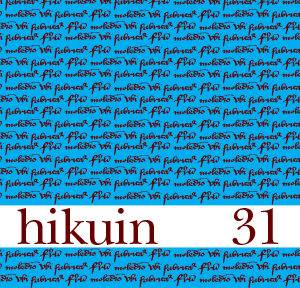Om jernfremstillingspladserne nær Tvååker, Halland
Abstract
Medieval direct iron production at Jernvirke and Ugglehult, Tvååker, Halland
By Vagn Fabritius Buchwald
The archaeological excavations in 1993-1995 at Jernvirke, RAÄ 85, and Ugglehult, RAÄ 84, East of Tvååker, Halland, have yielded a large number of slags and ore, but very few iron objects. About 80 objects were selected for thorough structural and analytical studies. It is shown that the slags from Jernvirke belong to the ancient bloomery process where clay-built twin furnaces have been operated with hand-bellows. The slags are similar to slags from earlier or contemporary clay-built furnaces, both in chemical and structural aspects, and examples from other localities are given. The specific gravity is 3.0-3.6 g/cm3 and the slags are generally quite dense. The yield of iron has been calculated to be about 19 kg per 100 kg slag present on the site. The iron blooms were soft wrought iron with less than 0.1% carbon. The slags from Ugglehult are of a new type due to the introduction of water-powered bellows. They are slightly more porous and have specific gravities of 2.8-3.4 g/cm3. They are similar to slags from later water-powered furnaces in southern Sweden of which examples are given. It became customary to use double bellows, but we do not know whether this was already the case at Ugglehult. The furnaces have not been identified, but they may have been similar to the stone-built furnaces of later centuries, as e.g. described at Nornäs, Sweden, 1851. The yield of iron was considerably improved relatively to Jernvirke, as deduced from the increase in the ratio SiO2/FeO of the surviving slags. The iron blooms were slightly carbon-enriched wrought iron with 0.1-0.2% carbon. In an attempt to estimate the charcoal consumption and the influence on the surrounding forests various assumptions had to be made. In one scenario, that appears quite likely, it is shown that the large slag heaps around the “modern” Ugglehult furnace may have accumulated over 50 years, corresponding to a production rate of some 200 blooms, each of 10 kg per year. This required coppicing for charcoal in a forest area of 14 ha. In this scenario the consequences for the forest caused by the iron production were apparently minor, so when the iron production at Ugglehult declined and stopped in the 13th century it must have had other causes.
References
Buchwald, V.F. 1994 a. Smedejern, essesvejsning og slaggekarakterisering. Dansk Metallurgisk Selskabs Årbog, s. 131-171.
Buchwald, V.F. 1994 b. Om proveniensbestemmelse, med særligt henblik på de hallandske kloder, i Medeltida Danskt Järn (Redaktør Sven-Olof Olsson),CSK, Högskolan i Halmstad, s. 108-126.
Buchwald, V.F. 1998. Myremalm. Geologisk Tidsskrift, hæfte 1: 1-26, København.
Buchwald, V.F. 2002. Jern og stål i Skandinavien før 1600 AD belyst ved slaggeanalysemetoden. Dansk Metallurgisk Selskabs Årbog, s. 165-210.
Buchwald, V.F. & Wivel, Helle 1998. Slag analysis as a method for the characterization and provenancing of ancient iron objects. Materials Characterization, Vol.40: 73-96.
Busch, J.A.W. 1972. Ironmaking by the bloomery process at Nornäs, Sweden, in 1851. Bulletin of the Historical Metallurgy Group Vol.6, nr.1: 28-33.
Englund, L.E. 1994. Vikingatida blästbruk i Västsverige. Från Borås och de sju häraderna, Vol.42: 7-38.
Fritzbøger, Bo 1994. Kulturskoven. Dansk Skovbrug fra Oldtid til Nutid. København.
Nihlén, John 1939. Äldre järntillverkning i Sydsverige. Jernkontorets Bergshistoriska Skriftserie Nr.9. Saini-Eidukat, B. et al. 1994. Hibbingite, a new mineral from the Duluth complex. American Mineralogist, Vol.79: 555-561.
Serning, Inga 1973. Förhistorisk järnhantering i Dalarna. Jernkontorets Forskning Serie H Nr.9, 139 s.
Voss, Olfert 1993. Snorup. Et jernudvindingsområde i Sydvestjylland. Nationalmuseets Arbejdsmark, s. 97-111.
Ödman, A. 2001. Vittsjö. En socken i dansk järnbruksbygd. Lunds Universitet, Arkæologisk Institut, Report Series No.76: 1-179.
Downloads
Published
How to Cite
Issue
Section
License
Forfatter og Forlag.





